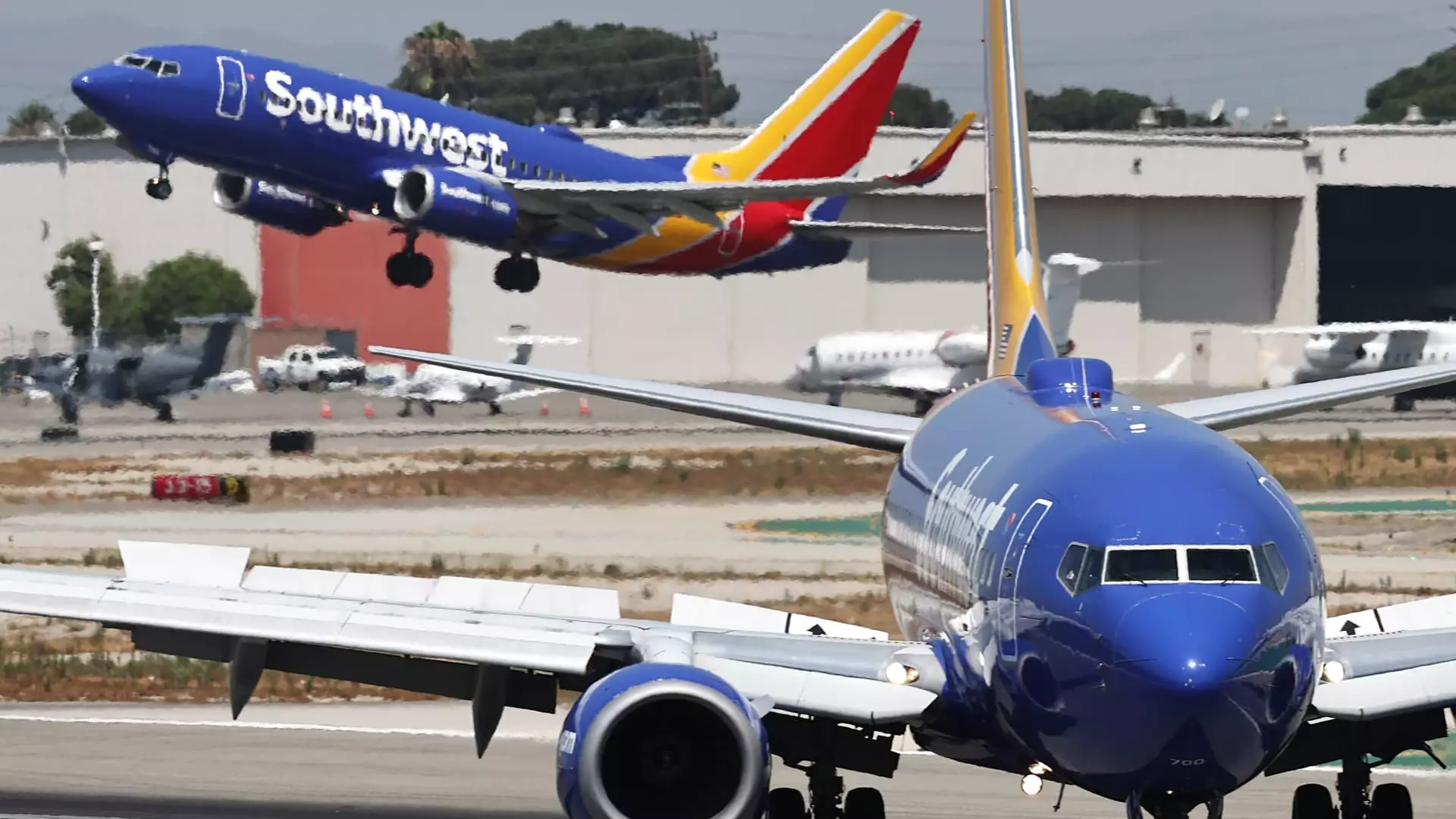Southwest Airlines has recently revised its third-quarter financial outlook, projecting an increase in revenue rather than the anticipated decline. This shift represents a strategic pivot for the airline as it grapples with increased scrutiny from activist investors like Elliott Investment Management. While initially expecting a drop in unit revenue of up to 2% year-over-year, Southwest now anticipates a rise of as much as 3%. This positive adjustment is partly attributed to successfully rebooking customers impacted by the CrowdStrike outage affecting other airlines in July.
The airline has also received board approval for a significant share buyback program, amounting to $2.5 billion. While share buybacks are often viewed as an indicator of a company’s financial strength and a way to boost shareholder value, they can sometimes raise questions about long-term investment in the business’s operational health and growth prospects. This balance is crucial for Southwest Airlines as it prepares to navigate both short-term fixes and longer-term developments.
Strategic Board Enhancements
In a move that signals its commitment to evolving its leadership and strategic approach, Southwest Airlines has announced the addition of Bob Fornaro to its board of directors. Fornaro is a seasoned figure in the airline industry, having previously led Spirit Airlines and played a pivotal role in the merger with AirTran—a key historical moment for Southwest. His experience and familiarity with the company’s operational dynamics are expected to provide a valuable perspective as the airline seeks to enhance its market position.
This addition comes at a time when there is growing pressure for leadership changes. Elliott Investment Management has voiced its preference for new leadership and strategic direction. The need for Southwest to articulate a convincing growth narrative during its investor day presentation showcases the urgency of the matter.
Revolutionizing the Business Model
One of the most striking aspects of Southwest’s current strategy is its willingness to modify its long-standing business model. The airline, known for its unique operational approach, plans to introduce assigned seating and extra-legroom options—a move that signals a significant departure from its traditional policies. These adjustments are designed to unlock additional revenue streams, although implementation timelines point to a gradual evolution rather than an immediate overhaul.
Projected changes, such as the introduction of seats with an extra 34 inches of legroom, are not expected until 2026, pending Federal Aviation Administration approval. However, the long-term forecast for these changes is promising, with anticipated earnings of $1.7 billion before interest and taxes by 2027, underpinning the financial rationale behind these decisions.
Amidst growing competitive pressure, Southwest has reaffirmed its established policy of allowing customers to check up to two pieces of luggage for free. This approach has been a hallmark of its customer service strategy, aimed at enhancing market share despite potential revenue losses from baggage fees. Balancing competitive pricing with service offerings represents a critical component of Southwest’s strategy to remain distinct in a crowded marketplace.
However, the terrain is not without its challenges. The airline faces difficulties in acquiring new aircraft due to production delays from Boeing, particularly concerning the 737 Max 7, which positions it at a disadvantage when optimizing route efficiency with appropriately sized airplanes. To mitigate costs resulting from these issues, Southwest is proactively reducing service in major hubs like Atlanta and may need to make staffing cuts affecting hundreds of crew members.
As Southwest Airlines approaches the end of the year, the transition occurring within its leadership ranks adds another layer of complexity. With the impending departure of executive chairman and former CEO Gary Kelly, uncertainty looms over the airline’s future direction. Elliott’s influence and demands for leadership change intensify the need for clarity and assurance of a cohesive operational strategy.
In this multifaceted landscape, Southwest Airlines faces the daunting task of balancing shareholder expectations with customer satisfaction and operational efficiency. Its recent adjustments, from revenue forecasts to strategic hiring and operational changes, reflect a response to both external pressures and internal aspirations. The road ahead will require deft maneuvering to harmonize these elements while ensuring the airline remains a competitive force in the evolving aviation industry.


Leave a Reply